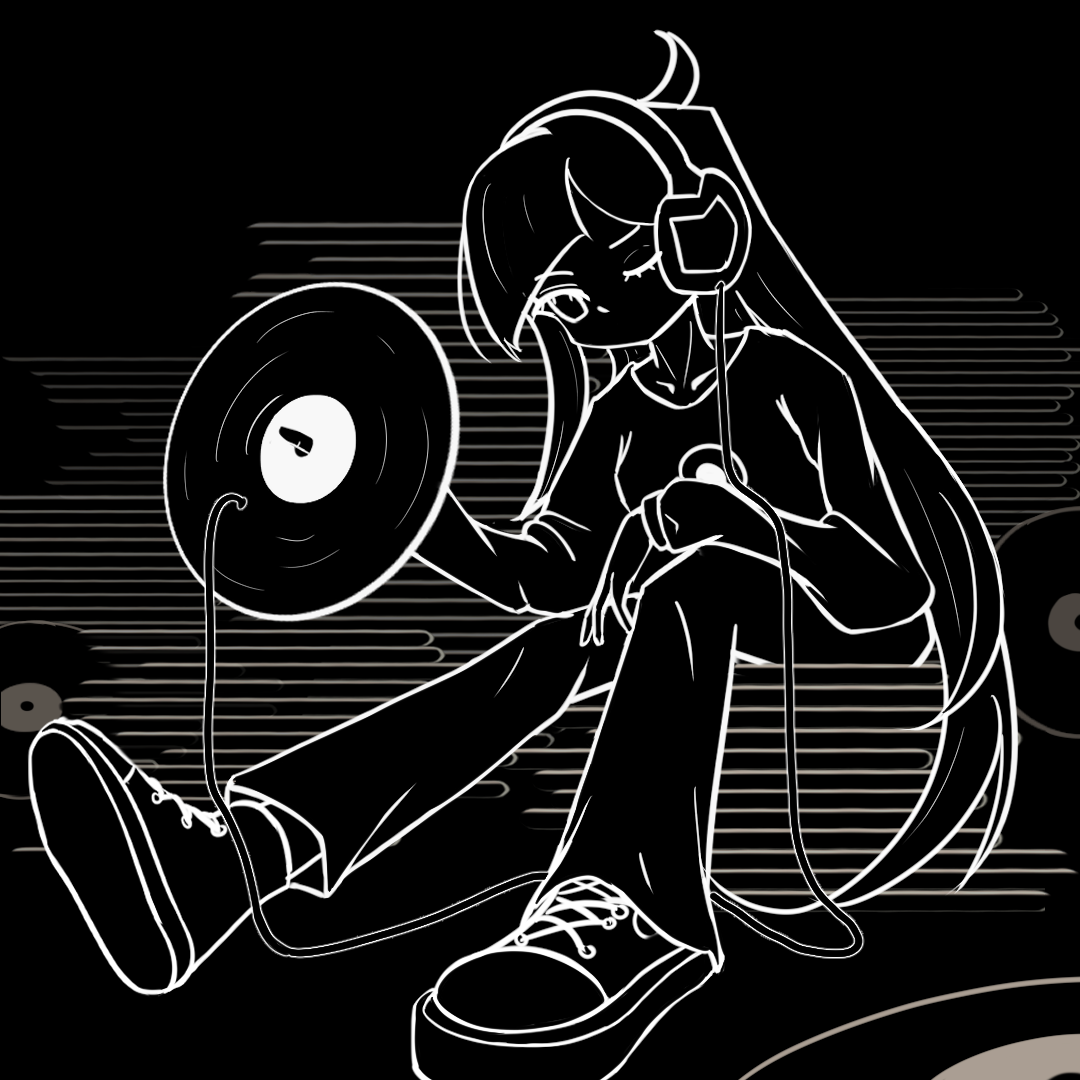Second Take: Repeat purchases of vinyl albums harm environment, consumers

(Alston Kao/Daily Bruin staff)
By Katy Nicholas
June 5, 2024 12:48 p.m.
This post was updated Aug. 11 at 7:15 p.m.
In an age where vinyl LPs are all the rage, it’s time to consume physical forms of music in moderation.
Vinyl records have made a comeback in the past decade despite the dominance of more convenient forms of music listening such as streaming. According to Forbes, there were only 9.2 million vinyls sold in 2014, but in 2023 nearly 50 million vinyl albums flew off the shelves. This resurgence in vinyl demand is partially due to the increased power of the Internet and social media in shaping the behavior of artist fandoms, and some fans’ desire to own as much merchandise as possible from their favorite artists. While fans may be motivated by parasocial relationships with celebrities, the musicians selling vinyl LPs in bulk may have their own pocketbook and sales-based chart peaks in mind, as music charts are still strongly influenced by physical album sales. The music culture that prioritizes redundant purchases of vinyl and ignores both sustainability and equity to fans is a vicious cycle of consumerism that needs to change.
Consumers’ renewed interest in vinyl is not completely unwarranted. Many music listeners and vinyl fanatics claim that vinyl has a warmer sound and that this tangible difference is the reason they prefer playing physical records. In reality, research by the Washington Post suggests that this difference is so small that it is undetectable by most human ears. This study also revealed that the resurgence of vinyls has contributed to an abandonment of classic vinyl making strategies, skipping the steps that would make the records sound better than digital audio. Specifically, instead of using the raw recording of a song to make the vinyls, audio from the digital recording is being used, defeating the purpose of putting the music on the vinyl in the first place.
Even if vinyl does produce a unique sound, part of the motivation for consumers to collect vinyls is for the merchandise aspect of the experience. Taylor Swift fans, known as Swifties, know all too well that Swift tends to release at least four versions of her albums on vinyl, each with slight differences that can create a perception that each version is more unique than it is. For her “Midnights” album release in 2022, Swift crafted four different-colored record sets that together formed one large clock. She took a similar approach for her “1989 (Taylor’s Version)” re-release last year, despite many fans already owning the 2014 original version of the chart-topping record. According to Billboard, only about half of vinyl buyers actually own a record player, supporting the assumption that a large portion of vinyl consumers only purchase for the collectibility feature.
[Related: Album review: ‘THE TORTURED POETS DEPARTMENT’ is chaired by sultry slang, melodramatic monotony]
With the release of “THE TORTURED POETS DEPARTMENT” in April, Swift released more than 19 versions of the album, including nine CD variants, six vinyls and four cassette tapes. Several of these versions featured a different bonus song branded as an exclusive. Some fans found themselves purchasing multiple versions, not wanting to miss out on collecting more music, just for Swift to release all of the bonus songs on streaming services two hours after the original album. With these versions, “THE TORTURED POETS DEPARTMENT” moved 700,000 vinyl copies and set a new record for first-week vinyl sales, but there is a good chance that many of those copies went to repeat buyers.
Swift is not the only artist at fault for these tactics, since musicians like Billie Eilish and Olivia Rodrigo have used the same strategies as Swift to mass-produce “exclusive” versions of their records in different colors, designs or with bonus songs. While artists may sell extra vinyls for profit, the main reason is likely to see their album’s popularity rise in the charts. Fans can benefit from collecting multiple versions of the vinyl in the same way a baseball fan can collect baseball cards of their favorite players. That said, these duplicate purchases are inherently wasteful, excessive and leave countless unnecessary vinyls sitting on a shelf on display.
According to Forbes, the production of one vinyl album produces 0.5 kg of carbon dioxide, and that’s not even including the environmental costs of packaging and transportation. This is about the same amount of carbon dioxide produced when driving a car one mile. When consumers are purchasing two or more copies of the same album, these greenhouse gas emissions can add up quickly. Artists offering vinyl variants to obtain higher chart positions, as well as fans’ rabid purchasing of multiple copies of the same album, are both unacceptable and detrimental to the environment.
No matter the reason for the vinyl phenomenon, its omnipresence in contemporary music consumption is problematic. The music industry is not generally brought up in discussions about environmental sustainability, but it is time that there be greater accountability for record labels and musicians about their direct impact. While listening to a song does not directly emit thousands of tons of carbon dioxide, chances are that most of the nearly 50 million vinyls that were sold in 2023 will eventually end up in landfills.
[Related: Running on bike power, Coastalong 2024 brings music and sustainability to UCLA]
In addition to the environmental effect, it is important to consider which consumers are being targeted by this new vinyl fad. DJ Magazine ran a study that found 59% of 18- to 24-year-olds bought vinyls in 2023 while 45% or less of every other generation participated in the market. The youngest generation of adults is more likely to partake in shopping trends, but they also are the least financially prepared to do so. According to Other Record Labels, the average vinyl costs at least $20, which can alternatively be used to purchase almost two months’ worth of music streaming services. When the national minimum wage is less than $8, artists should not be coaxing their youngest fans to spend unnecessary money on multiple copies of their albums.
Of course, not everything about vinyls needs to be criticized. Independent record stores have benefitted from the vinyl revival, offering a unique environment for music enthusiasts to interact with and support small businesses in the process. But when only about 41% of all vinyl sales come from these indie record stores, and the rest come from large distributors such as Amazon and Target or directly from an artist’s website, it is clear that the overwhelming consumerist culture surrounding vinyl needs a dramatic change. Even the sentimentality of putting on an old favorite record does not validate some fans’ erroneous belief that having multiple copies of one album is necessary.
When the environment needs help more than ever, one copy of your favorite record will be more than enough.




